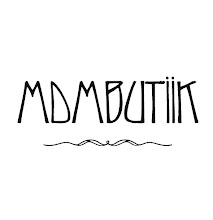Paljud on minult küsinud, et kuidas ma tean, kui vanad on need ehtekivid, mida oma ehetes kasutan. Vanuse määramisel saab kasutada erinevaid viise, kirjutangi siin mõnedest nippidest, mida olen ise kasutanud või mida annaks kasutada.
***Esimene, kõige lihtsam viis, on uskuda kivide
müüjat ;) Eks see ole natuke riskantne ning minu jaoks on usutavamad need müüjad, kes on kive müünud pikka aega ja lisavad toote juurde võimalikult palju informatsiooni, ka näiteks foto originaalpakendist. Samamoodi teavad müüjad, millisest tegevuse lõpetanud firma laost nad oma tooted saavad, nii oskavad nad öelda, millises ajavahemikus firma tegutses. Näiteks ehtebrändi "Laguna" - omanik Royal Craftsmen Inc. mis tegutses 1944-1980 (info siit:
Vintage Jewelry Designers History)- tootmisest järele jäänud helmeid, kinniseid ja poolikuid detaile leiab eBayst päris palju.
***Teine, ka väga lihtne viis, on see, kui kivide pakendile on lisatud
kuupäev ja aastaaeg. Pole muud teha kui lugeda :)
***Kolmas variant on kasutada dateerimisel
tootjamaad, on see siis Lääne Saksamaa (1949-1990), okupeeritud Saksamaa US-tsoon (1945-1949), Tšehhoslovakkia (1918-1992) või okupeeritud Jaapan (1945-1952).
***Neljas viis on
pakendi või logo formaat. Swarovski on tootnud ehtekive läbi aastakümnete ning aja jooksul on pakendid muutunud. Mul pole kindlat viidet, kus oleks kirjas, mis ajal millist pakendit kasutati, kuid olen eBays silmad lahti hoidnud ja meelde jätnud müüjate pakutud aastad teatud pakenditele. Daniel Swarovski lõi firma koos Armand Kosmanni ja Franz Weissiga aastal 1895 (sellest pakenditel tähed K.S. & Co, mis on lühend A. Kosmann, Daniel Swarovski & Co). Algne logo oli lill (edelweiss), praegu ehk kõige enam tuntud luigekujutis võeti logoks aastal 1988. Vahepeal peaks olema ka lihvitud kivi kujutis, kuid selle kohta mul info puudub. Kõige uuem bränd on
CRYSTALLIZED TM -
Swarovski Elements.
***Viiendaks võib
tootja järgi pakkuda ajavahemiku. Muidugi peab sel juhul pakendilt või müüja kaudu teada saama tootja nime. Näiteks Cherry Brand helmed ja ehtekivid toodeti USA okupeeritud Jaapanis (1945-52). Ehtekivide pakenditelt annab mõnikord välja lugeda ka
edasimüüja firma nime, aadressi ja telefoni. Nii saab võimaluse korral kindlaks teha antud firma tegutsemisaja või näiteks mitmekohalist telefoni numbrit kunagi kasutati. Sellist infot ma veel otsida ei oska.
***Kuuenda dateerimise võimaluse puhul, kuidas teada saada, kas ehtekivid on valmistatud pärast 50ndaid, tuleks meeles pidada, et AB (
aurora borealis) pinnaviimistlus leiutati Daniel Swarovski poolt 1955 aaastal ning ükski ehe, milles on ABläikelisi kive, ei saa olla sellest vanem ;)
***Seitsmendaks, on teatud sorti
spetsiaalseid materjale, mille tootmine langeb teatud aastatesse. Näiteks uraaniumi sisaldav klaas (USAs kasutatakse mõistet
vaseline glass alates 1920ndatest), mis UV valguses helendub. Kui avastati plastmassi "võlud", siis kasutati materjale nagu tselluloid (
celluloid),
bakelite (avastati 1909),
catalin (1930ndad) ja
lucite (alates 1931). Viimane võimaldas saada vastupidavamat kristallselget materjali, mida sai toota väga suures valikus ja kaunites värvides ning selle kasutuselevõtmisega muutus
bakelite iganenuks. Ka on olemas teatud sorti klaas, millesse segati sulakulda ning mida enam ei toodeta kulla kõrge hinna tõttu. Vbl on tegu lihtsalt legendidega aga sellest viimasest klaasist kirjutan kindlasti lähemalt kunagi hiljem ;)
PS Postitus tuli väga pikk ja kui sa näed siin näpukaid või muid vigu, anna teada mdmB@hot.ee Aitäh!
***
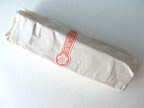

Jaapani Cherry Brand tekstuuriga klaaskivid (1945-1952)
Cherry Brand textured cabochons from Japan (1945-1952)
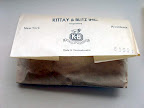

Pakk Tšehhoslovakkia ehtekive (1945-1992), pakendi tagaküljel on näha USA edasimüüja
Package of Czechoslovakian rhinestones (1945-1992), backside shows the name of US importer

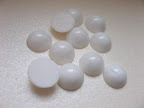
Kirjud "iris" ehtekivid ülemisest Tšehhoslovakkia pakendist ja valged ehtekivid alumisest Lääne Saksamaa pakendist
Colorful "iris" rhinestones from Czechoslovakian package above and white cabochons from Western Germany package below

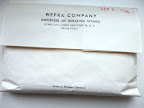
Lääne Saksamaal valmistatud valgete kivide pakend, teisel küljel näha USA edasimüüja ning tempel kuupäevaga: sept 5 1956
Package of white glass cabochons thet were made in Western Germany, backside US importer name and stamped: sept 5 1956

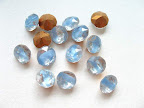
Lääne Saksamaa "givre" ehtekivid, eeldatakse, et käsitsi kirjutatud pakendid on vanemad kui trükitud
Western Germany "givre" rhinestones, handwritten packages are believed to be older then printed

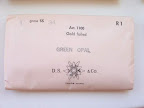
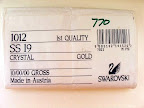
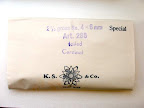
Valik Austria kristalli pakendeid: lillega (edelweiss) täheühend D. S. & Co kui ka K. S & Co, teemandikujuline ja luigemärgiga
Selection of Austrian crystal packages: with edelweiss and letters D. S & Co and letters K. S. & Co, with diamante picture (letters D S W) and the swan logo

Kaks pakki musti ehtekive. Üks Saksamaa USA-tsoonist (1945-1949) ja teine Lääne Saksamaalt (1949-1990)
Two packages of black rhinestones. One from Germany US-zone (1945-1949) and other from Western Germany (1949-1990)
***
Many people have asked me how can I tell the age of the rhinestones I use in my jewelry. There are many ways to do it and I'll write about them in this post. Some of them I use, some don't.
***First, the easiest way, is to believe the
seller ;) It is a bit risky and those sellers seem more reliable who's been in the rhinestone business for a long time and add detailed description including a photo of the original package. But I do prefer to receive stones in original package. The sellers know where they get their supplies so the age of rhinestones can be traced through the old jewelry companies and the years they were in business (for example "Laguna" was founded by Royal Craftsmen Inc. and was in business 1944-1980 - found the info from
Vintage Jewelry Designers History)
***Second, also simple option is when there is a
date written/stamped on the rhinestone package. All you need to do is read :)
***Third option is to use the
origin country. If it is Western Germany (1949-1990) or Germany US-zone (1945-1949), Czechoslovakia (1918-1992) or occupied Japan (1945-1952).
***Fourth way to date the stones, is the
format of the packages or logos. Since Swarovski company has manufactured crystals through decades the packages changed through the time. I don't have a reliable source where it's written the years and according package. But I've read different item descriptions on eBay and tried to remember the decades one or other seller associate with different packages. Daniel Swarovski established his company with Armand Kosmann and Franz Weiss in 1895 (so letters on the packages K.S. & Co are actually shortened version of A. Kosmann, Daniel Swarovski & Co). The original Swarovski logo was an edelweiss flower, it was replaced by current swan logo in 1988. There should be a cut diamond logo also, but I have no info about it. The newest brand is
CRYSTALLIZED TM -
Swarovski Elements.
***Sometimes it's possible to read a
wholesalers company name, address and telephone number on the package. I guess it may be possible to check in what time that company was in business and how many digit numbers were used for telephones in what time etc. I haven't searched for info like that. There are also certain
manufacturers or brands that can be connected to specific years. For example Cherry Brand beads and cabochons were made in US occupied Japan in 1945-1952.
***The year of 1955 is a special milestone in the rhinestone history because it was then when Daniel Swarovski created a special crystal coating that had all the colors of the rainbow. It's called
aurora borealis (AB). So stones with AB coating cannot be older then 1955 ;)
***The last one in this list is the fact that the materials of jewelry business changed accordingly the steps taken by the science.
Special materials were popular in different years. For example a special glass called uranium glass or vaseline glass (from 1920s in US) that glows in the UV-light. And when the magic world of the plastic was discovered, jewelry business started to use new materials like celluloid, bakelite (since 1909), catalin (1930s) and lucite (since 1931). With the last one it was possible to create clear durable material with a rainbow of beautiful colors and it was the
end of bakelite. There were amazing materials that were used! My favourite is a glass that was mixed with melted gold, the production was stopped because the gold price went up. Maybe it is just a legend but I will write more about it soon ;)
PS This post was difficult to write and if you see I made a mistake somewhere, please let me know mdmB@hot.ee Thanks!
Edit: Found info, that Swarovski changed bead article numbers in 4 digit in 1968. So the three digit articles were produced before that. I wonder if it should apply to rhinestones also.
LINK
























